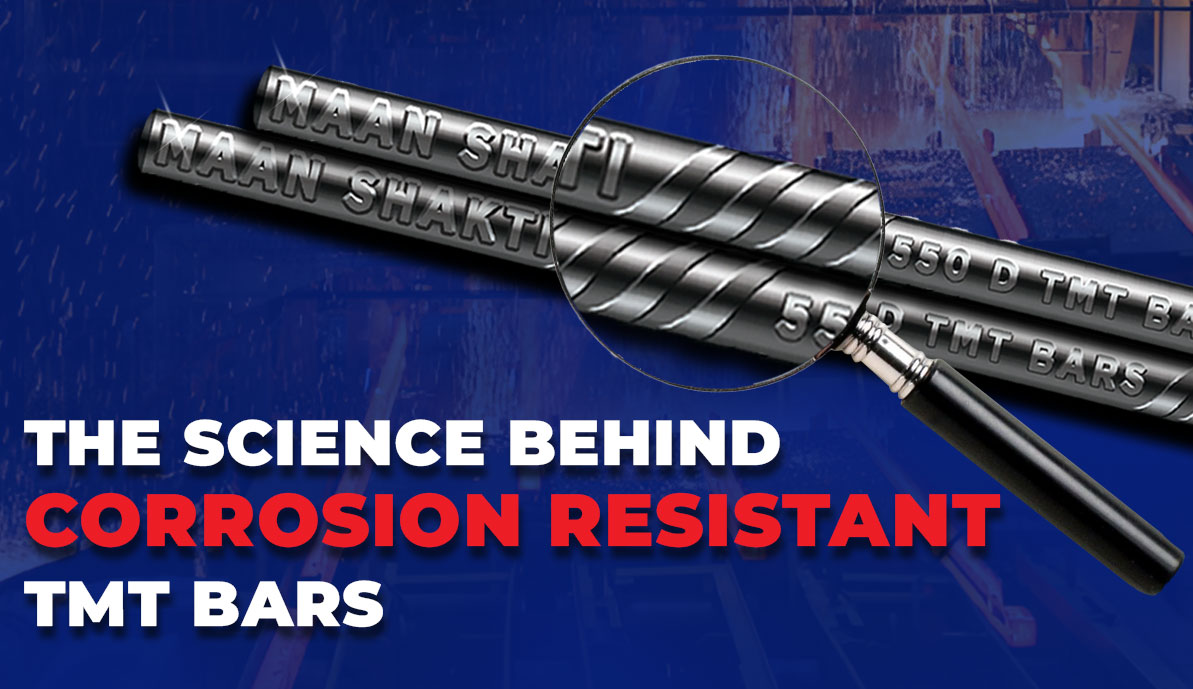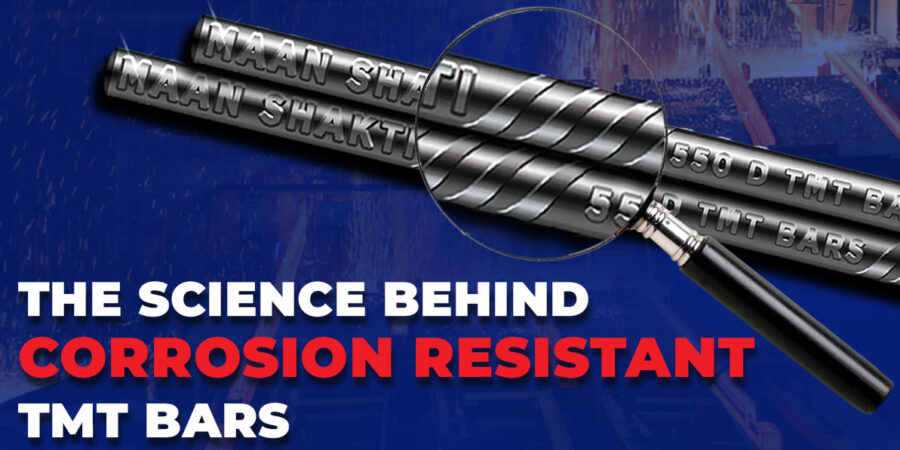Corrosion, in the construction dictionary, refers to the deterioration of metals resulting from environmental impacts and reactions of one metal with another. Considering the construction history, corrosion is more than just an aesthetic problem. Beyond the foul appearance, it has dangerous impacts on buildings, pipelines, and other equipment.
Fortunately, the mechanical treatment conducted during the manufacturing process of TMT bars ensures safety. If you are here to choose TMT bars suppliers for high-quality rods, you must first understand how corrosion-resistant ensures secure and reliable construction. But before that, let’s find out why corrosion may hamper the house’s structural integrity or any other industrial project.
Construction Corrosion – What Does It Mean?
Corrosion depends on dust, rainfall, and sulphur dioxide gas resulting from fossil fuel combustion. It reacts with moisture in sulphur dioxide, chlorine, and salt, increasing the rate of corrosion. Higher temperatures and strong winds may also impose risks of corrosion.
Metal components located outside the building are more susceptible to corrosion and other atmospheric conditions. Without suitable preventive measures and control, corrosion may result in serious structural damage in the upcoming years. So, a building built with low-quality steel bars may witness construction corrosion somewhere down the road.
As a result, corrosion reduces the value of buildings and other structures because the metal thickness reduces, further causing loss of mechanical strength. In addition, corrosion may leak pipes, vessels, and tanks and may also result in structural failure. So, to ensure your building is in good condition, it’s crucial to use premium-quality steel bars. That’s where the role of thermo-mechanically treated bars comes into being.
Are TMT Bars Corrosion-Resistant?
The base of any strong structure lies in the raw materials used. The reinforcement bars are the foundation of today’s construction. Compared to traditional steel bars, these bars are corrosion-resistant.
It prevents the structure from rusting, which would otherwise weaken the bars and compromise the structural integrity. Seismic activity is common in India, so construction demands a more resilient solution. This is where TMT bars serve their purpose.
TMT bars achieve corrosion resistance through a thoughtful material selection process and unique manufacturing techniques. The reasons why thermo-mechanically treated bars are corrosion-resistant are given below.
Skilfully Chosen Raw Materials
Steel plants use excellent quality raw materials to make TMT bars corrosion-resistant. A few of them include:
- Iron ore
- Dolomite
- Coal and Coke
- Limestone and more
They ensure the anti-corrosion aspects and strength. They are tested multiple times to ensure supreme quality.
Outstanding Manufacturing Technique
The following are the manufacturing techniques that ensure TMT bars are corrosion-resistant:
-
The Hot Rolling Method
It’s the initial step that includes heating the steel billets to an excessively high temperature. The high temperature allows for a perfect shape. The bars achieve a desirable diameter by passing through a series of rollers. Notably, the rolling process refines the grain structure and makes it stronger.
-
The Quenching Method
The next step is the quenching process. Here, the hot-rolled bars are rapidly cooled using a high-pressure water spray. The sudden quenching ensures a temperature change that transforms the outer layer into a hard material known as martensite. The martensite layer is highly resistant to corrosion because of the carbon content, while the softer core allows for bendability.
-
Self-Tempering: A Perfect Balance
The next process is self-tempering. The bar’s core remains hot as soon as the quenching process occurs. The inner core cools down gradually. So, it tempers the brittle martensite layer. The self-tempering method offers a balanced microstructure throughout the bar. The inner core remains flexible and ductile.
Micro-Alloying Elements
Micro-alloying elements are elements added to the steel during manufacturing. These elements further improve the resistance of steel by forming a safe layer on the surface. This surface protects it from dangerous elements. A few micro-alloying elements include the following:
- Boron improves the bar’s cooling process and assists it in achieving bendable and malleable properties
- Vanadium combines carbide compounds and further improves its quality
- Niobium refines the grain structure and offers toughness and weldability
- Titanium refines and detoxifies grains, thereby promoting a unique microstructure
- Zirconium controls grain size and improves its durability
- Cerium and Lanthanum are rare-earth metals and clean the steel to remove impurities
- Molybdenum offer strength and makes the bar corrosion-resistant
Mill Scaled Surface
TMT bars undergo controlled cooling during the self-tempering process. This creates an adherent mill scale on the bar’s outer surface. The mill scale further acts as a physical barrier and makes it difficult for corrosive elements such as chlorides and moisture to penetrate.
Why does Corrosion Resistance in TMT Bars matter?
Corrosion-resistant TMT bars ensure the following things:
Structural Integrity
Corrosion or rust may weaken the bars and reduce their ability to bear structural weight, resulting in deformations and cracks in the future. However, the corrosion-protected layer in TMT bars maintains strength for a long time.
Longevity
Regular steel bars may become brittle and lose strength due to rust. However, TMT bars resist deterioration, extending their lifespan.
Reduces Maintenance Expenses
Rust buildup in steel bars requires regular maintenance, which is expensive and disrupts structural functionality. Corrosion-resistant bars reduce the need for maintenance and minimise expenses.
Ensures Safety
Corrosion can make a steel structure vulnerable to failure, specifically during seismic zones that witness extreme weather events like earthquakes. Nonetheless, corrosion-resistant TMT bars maintain their flexibility and strength, further ensuring their structural integrity.
A Varying Range of Applications in Harsh Environments
When it comes to Indian construction, various projects occur in areas that witness high humidity and coastal regions with excessive amounts of salt.
Note: Salt, conducive to corrosion, can attract water and moisture from the environment. This speeds up the oxidation (or rusting) procedure.
Corrosion-resistant bars are designed to withstand these harsh conditions.
Wrapping up
So, this post has highlighted how corrosion-resistant TMT bars are excellent for modern construction. However, you must not undermine the importance of storing them in a safe region in your construction area. Neglecting this may impose future issues with rusting.
You can prevent their contact with water to minimise damage from the moisture. Thus, prioritising corrosion resistance ensures the construction project’s longevity, cost-effectiveness, and safety. So, you can select the top-graded TMT Steel Suppliers Kolkata to buy the best corrosion-resistant bars at wholesale prices.


